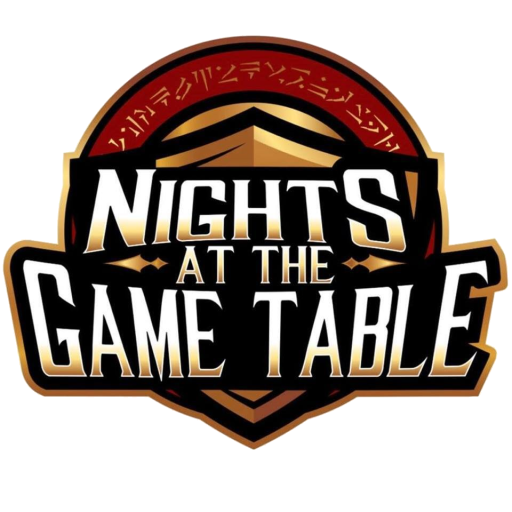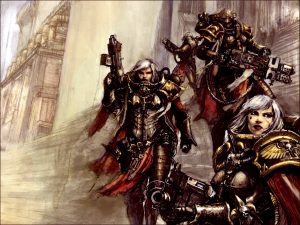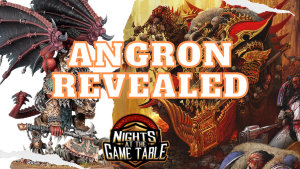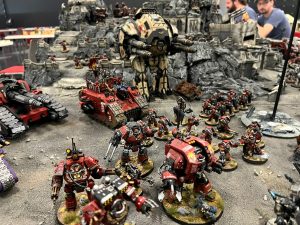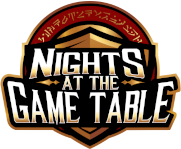Welcome back to Warhammer Tactics! Today, we’re going to be reaching back to your middle school and high school math classes, because we’re going to be talking PEMDAS, 40K style.
In Algebra, there’s a set of rules that describe the order you perform mathematical functions to an equation, called PEMDAS (Parentheses, Exponents, Multiplication, Division, Addition, Subtraction). PEMDAS is a very strict rule, almost like a formula in and of itself that must be followed for mathematical equations.

And you said you’d never use these again!
In Warhammer 40K, many phases have their own unique sort of PEMDAS, if you will. However, for 40K these orders are more like guidelines, then fast rules. These guidelines are also phase-specific, as opposed to being an overarching set of guidelines for your turn. Sometimes, depending on the situation, it might be correct to bend or even break these guidelines. Just keep that in mind as we go along. I’ll make sure that you get an example or two of what breaking those rules looks like, and why you would do it.
Deployment: Kicking us off, we’re actually starting with pre-game set up before we even dive into the actual phases of the game. During deployment, players take turns placing units onto the table. Once a unit is placed, it’s generally locked in that position until the game begins. That means that deployments give information to your opponent based on what you deploy and where it is. Optimizing our order of operations here will revolve around minimizing how much information we give our opponent.

Obviously, eventually our opponent will have 100% knowledge of how our army is deployed. But the longer we make him wait to get significant information, the better your odds at out deploying your opponent become. After all, if your opponent gives you lots of information early and you don’t, you can leverage that information against them.
In order of importance:
- Anything that you want in Reserves
- Any units you have that move rapidly, probably a minimum of 12”
- Chaff units. Gaunts, Cultists, etc
- Supporting Characters and Units
- Everything remaining

So, why do we do this in this order? In short, the list provided here flows directly from deployments that provide basically no information, to high amounts of information.
We start with deployments that provide very little information, and that’s reserves. Units that are in reserve can mostly show up anywhere on the table. Since they can more or less be anywhere, your opponent gets pretty much no information from these deployments.
Moving along, we hit high mobility units. Units with high mobility have the potential to cover huge chunks of the board. So, it’s very plausible to deploy say, my Land Speeders early, and then move them to where they need to be. By leveraging the mobility of these units to move towards the rest of our army later, we delay revealing where the crux of our army will be deployed. It’s also possible your opponent will incorrectly believe you’re giving him information around where important parts of your army will be, which is icing on the cake.
Next, we have our chaff units. These models tend to either get placed on objectives, or screen out the enemy. I would probably deploy chaff units on objectives first and screens second, just to delay that information as long as possible. Once you have your screening units in place, your opponent should have at least a basic idea of where your army is going to be placed.
Nearing the end, we hit our support pieces. These units buff other units in our army, within a given range. We deploy these characters late in our deployment cycle because they give your opponent realistic ballparks for where you will place the rest of your army.
And at last, we have everything else. The big guns, as it were. We deploy these units last as they provide the most information to our opponent by a wide margin. Once you’ve placed say, a Las Predator, your opponent knows what firing lanes that Predator has. Hopefully, by delaying these kinds of deployments as long as possible, you become able to out-deploy your opponent.

Example of an exception: If you have a character that generates command points when stratagems are used, it’s usually a good idea to deploy him first so you’ll benefit from all pre game stratagem usage.
If that felt like a lot, don’t worry! The rest of these are much shorter. Deployment has quite a bit going on compared to the actual phases of the game.
Movement: Movement is probably one of the least intensive phases when it comes to Order of Operations. You can really just move your army as you please, as far as today’s subject is concerned.
There are a couple of things to keep in mind though.
- Remember that models can’t move through other models. Be careful that you don’t block off your own movement or charges. It’s a rare mistake, but I’ve seen it made.
- You should move your support pieces before you move the rest of your units, that way you know exactly where the ranges on your buffs will be. There’s nothing worse than accidentally moving outside of a critical buff range.

Psychic Phase: During the Psychic Phase, it’s important to prioritize your psychic powers based on importance. You only have one Command Reroll, after all. Because of that, we start with our most important power, whatever that may be, and work our way down.
By doing this, we ensure that our first failed power, and therefore our first opportunity to use our Command Reroll line up, which is ideal. The same reasoning applies if you have other abilities or stratagems that allow you to re roll psychic tests. You’ll have to determine which psychic power is most important to you for that phase first, of course, along with what order you want to do the rest of your powers afterward.
Exception to the rule: Some psychic powers move units. Depending on ranges and movement values, you may be in a situation where you could move outside of range of your other powers. Consider doing your shorter range powers first, but save your Reroll for when you really need it!

Shooting Phase: During the Shooting Phase, you should have a clear idea of what you want to do to your opponent’s board state before you begin shooting. Once you have that idea, there’s a very simple order of operations to follow:
You shoot units that have a low amount of options before your shoot units that have higher amounts of options.
To illustrate, let’s assume my opponent has two tanks, and I have two units. One unit is equipped with meltaguns and can only target one tank. The other unit has missiles and can shoot either tank.

The right order here is to shoot with our meltguns first, and then our missiles. We do this because we guarantee we get to shoot with all of our units. If the meltaguns kill the first tank, the missiles can shoot the second. If they don’t, the missiles can help finish off the first tank.
Consider for a moment what happens if we shoot the missiles first. If we shoot the tank the meltas can’t hit, then we risk injuring both tanks but destroying neither. Alternatively, if we shoot the tank the meltas can hit, we risk blowing up the tank and leaving the meltas unable to shoot.
This is somewhat of an overly simplistic example, but it demonstrates the idea. As much as possible, you want to make sure you get to fire with every unit that you can, and you want to make sure you accomplish your goals in the shooting phase, at least as much as dice allow. So, you should always start off with your units that only have one target, and work up.
Charge Phase: The charge phase is pretty free form. It’s pretty rare that you’ll have so many units to charge with that the order matters. So, much like the movement phase, you should always mind how you charge your units so you don’t accidentally block yourself off, and mind where your buffs are. It’s usually better to daisy chain and lose a couple models so everyone else can reroll 1’s, then it is to charge a long distance and end up outside of buff range.

Fight Phase: The Fight Phase has a lot more nuance to it than the other phases of the game.
This is because there isn’t a set order of operations to follow. It’s a lot more like the psychic phase in that you need to establish what is most important, and then follow that order of importance. There are a couple general things to consider that I’ll talk about here to help you establish that priority list.
First, you need to figure out what your overall objective is for this Fight phase. Maybe it’s killing the enemy warlord, maybe it’s trying to stop a horde of 40 boyz. Whatever it is, put your finger on it and keep it in mind.
Next, you should figure out which chain of activations that you can do is most likely to lead to that result. Assuming you have multiple units in close combat, you’ll have multiple sets of activations that you can follow. For example, if I have some Berserkers and some Cultists in melee with some Boyz, then I first determine my objective, which is killing the Boyz. I should activate the Berserkers first since they simply do way more damage and are likely to kill most of the Boyz. If I activate the cultists first, I probably won’t kill many Boyz, and the Boyz will probably kill most or all of my Berserkers, and that’s really bad.
This is of course an overly simplistic example, but it highlights what you should be thinking about and what that process looks like.
Morale Phase: I included this strictly for completion’s sake. Although there may be a rare, extraordinarily fringe scenario where the order you take your Morale tests matters, 99% of the time you can just take them in any order you please.
—
Well, that about wraps up today’s Warhammer Tactics! Once you digest and memorize these tips, you’ll see yourself out deploying and outplaying your opponent more often. Just remember that these are more like guidelines that should usually be followed, not rules that must be followed.
Next week’s article is going to have a different feel and vibe to it. Normally, we’ll be doing that by discussing tactics on various aspects of the game. However, the next article will be addressing a philosophical question that everyone, even very laid back players who play only for fun, tangles with.
Specifically, we’ll be discussing dice, and being intellectually honest about both your dice and decision making. It’s going to answer the age old question about how much attention you should give to your luck, and definitely not something you’ll want to miss!

